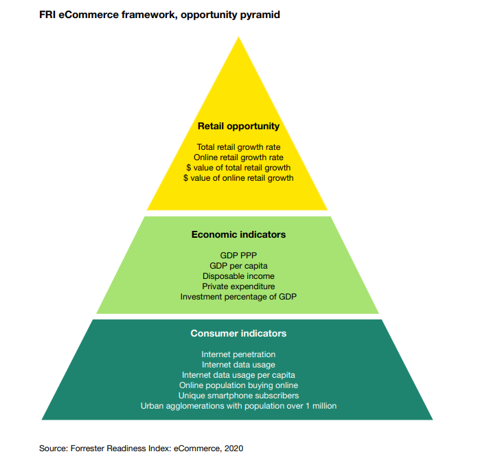
Jay Sinha is an associate professor at the Fox School of Business at Temple University, and Kunal Duggal is a BBA senior at the school. Views are the authors’ own.
Few industries are as susceptible to the fleeting consumer zeitgeist as the business of youth fashion. Fast-changing styles, competitive pricing, sudden and disruptive trends (like athleisure, hoodies and yogawear), together with fickle and exacting customers — all these have led to onetime industry leaders, like Gap, Express, and J. Crew, being outsmarted by nimble rivals that seem to come from nowhere.
Moreover, in an era of economic uncertainty, buyer apathy, and the ineffectiveness of traditional marketing, the ability of large companies to build brand cachet among the youth has come into question. There is now a new breed of niche, urban streetwear companies that are thriving in the youth market, often by staying below the radar and shunning traditional marketing tactics. These brands have gained a devoted network of passionate customers, who champion their every move. It may be instructive for brand managers of larger companies to take a closer look at their novel, unconventional tactics that are more in tune with the youth zeitgeist of the present.
One such brand is Supreme, the billion-dollar streetwear phenomenon that is practically unknown to people over 30. It operates a handful of physical stores worldwide and an online store, where clothes go on sale only once a week in limited supply, called a “drop.” Its creator James Jebbia is a veritable marketing and creative genius, arguably of the same caliber as Mark Zuckerberg or the late Steve Jobs, but without the same level of name recognition.
Jebbia’s British-American background and eclectic personal influences have been weaved into the brand’s DNA. Supreme opened in 1994 as a New York skateboarding shop, and it now counts high-school students and celebrities among its diverse mix of global followers. To Gen Y and Z, Supreme is more than just a “cool brand;” the clothes retail at absurdly high prices, drawing from desirable designs and limited availability.
Supreme has found a niche for itself to be something more than a streetwear brand, or a luxury brand, or even a cult brand. It has veered from conventional, normative notions of what a brand should be and morphed into an idea that is much more idiosyncratic and seminal: a youth meme. Therein lies the secret of its success.
A meme is defined as a unit of cultural transmission. Memes are text, pictures, videos, etc. that have an illuminating, engaging, and transmissible quality that make them readily shareable. There have been a number of corporate brands that became successful memes, but there has always been a top-down characteristic to their dissemination. The famous Nike swoosh is of course a successful meme. Over the years the company has “seeded” the design through endorsers and sponsored athletes who flaunt it as part of their contractual obligation.
What makes Supreme different is that the company has made no effort to popularize the brand as a meme. Instead, it grew and spread from the grassroots, first from a set of dedicated skateboarders and then from a diverse bunch of urban youth who found their own meanings from the brand’s credo. The brand’s roots in skateboard culture lent it street credibility and its distinctive box logo coupled with its catchy designs, based on youth phenomena like Dipset and Raekwon, made the brand seem authentic and desirable.
The Supreme logo is available on stickers that are obtainable during the sale of its apparel. The brand’s followers demonstrate their attachment and affiliation by pasting these stickers in incongruous places and settings, like on laptop covers, backpacks, dorm room walls and car bumpers. This level of ubiquity and visibility has helped organically grow the brand network without the necessity of “push marketing”.
Celebrities like Mike Tyson, Rosa Acosta, Lou Reed, Jim Jones, and Kate Moss all have sported the brand, adding to its cachet and glamour. The company also has had a series of design collaborations with well-known and lesser-known artists, like Damien Hirst, Dondi White, and Kaws. Such developments have contributed toward Supreme’s desirability attaining an unprecedented level of frenzy and hysteria among its core followers. Even if the Supreme logo and the inexplicable craze for it are parodied in some quarters, it enhances the curiosity about the brand in a light-hearted and non-invasive way, just like a meme.
Marketing professionals may regard Supreme’s unconventional “pull tactics” as being true to the essence of the discipline. Marketing ultimately is the process of the cultural transmission of ideas. Indeed, all brands should want to be memes; they need to become what C.M. Kornbluth called a mindworm.
For Supreme, this cultural transmission is built in and occurs at the grassroots level. The brand concept is propagated every time someone patiently waits in line for the rare Supreme drop, every time someone hunts for the best deal in the secondary market after speculating about the price they have to pay on an online forum, and every time an item is posted on social media for someone’s personal gratification.
Larger companies like Nike and Adidas have made note of Supreme’s appeal among the youth and, in several instances, co-opted such tactics as drops and scarcity for their limited-edition releases. Yet in the eyes of the urban youth, none of these brands have attained the same level of authenticity and desirability that Supreme has.

